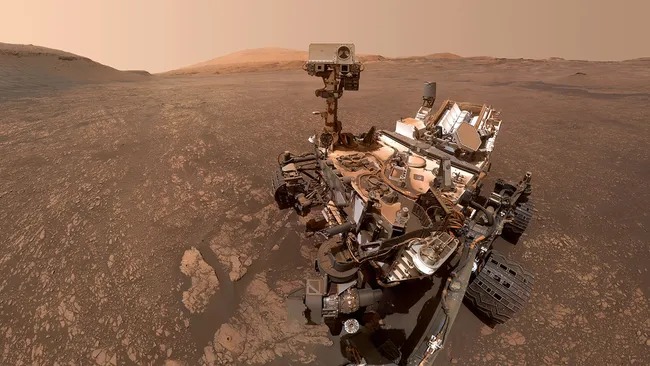Fri, Nov 10, 2023
Curiosity Continues the Search for Germs
NASA's handiwork continues to impress on Mars, with their Curiosity rover doggedly continuing on its mission past the 4,000th day on the planet since touching down on August 5th, 2012.

The Rover was originally sent to evaluate the possibility of microbial activity near the 3-mile tall Mount Sharp. The plan was for Curiosity to slowly inch its way up the mountain, using the layers of the rock to evaluate the Martial epochs as it went. The latest sample retrieved will hopefully show how the Martian climate evolved over time, particularly what happened to the once salty oceans of the basin.
“The types of sulfate and carbonate minerals that Curiosity’s instruments have identified in the last year help us understand what Mars was like so long ago. We’ve been anticipating these results for decades, and now Sequoia will tell us even more,” said Ashwin Vasavada, Curiosity project scientist at NASA’s Jet Propulsion Laboratory.
Curiosity will just "keep on keepin' on" in the traditional NASA sense, despite a couple niggles with the aged hardware as it continues to weather the harsh Martial seasons. Right now, one of its main 34mm mast cameras remains stuck between filter positions, affecting its image quality and limiting the mission to relying on its other 100mm focal length camera. The team continues to make minute nudging adjustments in the hopes the camera can push the filter back into position. Curiosity's power source should continue to work for "many more years" according to the lab, a prospect made even more likely with judicious piloting and additional software updates.
"They have also found ways to overcome challenges from wear on the rover’s drill system and robotic-arm joints. Software updates have fixed bugs and added new capabilities to Curiosity, too, making long drives easier for the rover and reducing wheel wear that comes from steering (an earlier addition of a traction-control algorithm also helps reduce wheel wear from driving over sharp rocks)."
More News
Known Traffic With respect to ATC clearances, means aircraft whose altitude, position, and intentions are known to ATC.>[...]
Aero Linx: Aviation Suppliers Association (ASA) Established February 25, 1993, the Aviation Suppliers Association (ASA), based in Washington, D.C., is a not-for-profit association,>[...]
Abeam An aircraft is “abeam” a fix, point, or object when that fix, point, or object is approximately 90 degrees to the right or left of the aircraft track. Abeam indic>[...]
Aero Linx: The Air Charter Safety Alliance The group, called the Air Charter Safety Alliance, will raise awareness of illegal charter flights among potential customers, charter bro>[...]
“For months, ALPA has been sounding the alarm on the ongoing efforts by some aircraft manufacturers to remove pilots from the flight deck and replace them with automation. To>[...]
 ANN's Daily Aero-Term (06.10.24): Known Traffic
ANN's Daily Aero-Term (06.10.24): Known Traffic ANN's Daily Aero-Linx (06.10.24)
ANN's Daily Aero-Linx (06.10.24) ANN's Daily Aero-Term (06.11.24): Abeam
ANN's Daily Aero-Term (06.11.24): Abeam ANN's Daily Aero-Linx (06.11.24)
ANN's Daily Aero-Linx (06.11.24) Aero-News: Quote of the Day (06.11.24)
Aero-News: Quote of the Day (06.11.24)



